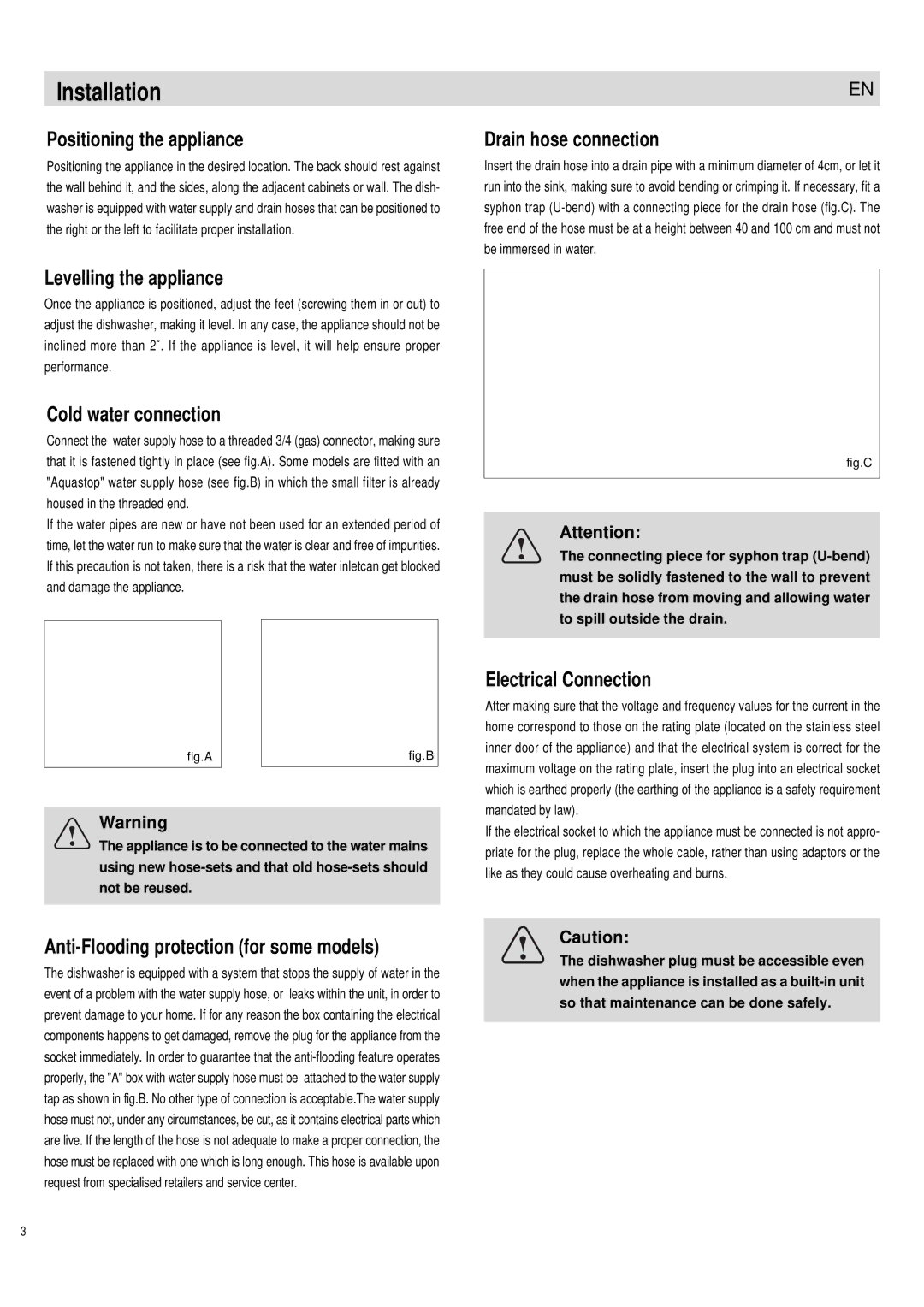DW12-PFE1 S, DW12-PFE1 ME specifications
The Haier DW12-PFE1 ME and DW12-PFE1 S are both innovative dishwashers designed to enhance kitchen functionality with their advanced features and technology. These models stand out in the crowded appliance market, offering performance, versatility, and convenience for modern households.One of the key features of the DW12-PFE1 is its large capacity. With the ability to accommodate up to 12 place settings, it provides ample space for all your dishes, cutlery, and cookware. This makes it particularly suitable for families or for those who love to entertain guests. The adjustable racks and folding tines offer flexibility to optimize loading configurations based on your needs, ensuring that no item goes unwashed.
Both models are equipped with a highly efficient energy system, which not only conserves energy but also reduces water consumption. Operating at a low noise level, both dishwashers ensure a quiet environment, allowing you to enjoy your leisure time without disturbances during operation. The eco-friendly design adheres to energy efficiency standards, making these dishwashers an environmentally responsible choice.
In terms of washing performance, the Haier DW12-PFE1 ME and S models boast multiple wash programs to cater to different cleaning needs. From intensive cycles for heavily soiled pots and pans to quick washes for lightly soiled dishes, users can easily select the desired program for optimal results. The innovative soil sensor technology adjusts the wash cycle duration and intensity based on the level of dirt detected, ensuring thorough cleaning while conserving resources.
Both models feature a delay start option, enabling users to set the dishwasher to begin its cycle at a more convenient time. This feature is particularly useful for those who want to take advantage of off-peak electricity rates or wish to have dishes cleaned overnight.
Safety is also a priority with these dishwashers. They are equipped with a child lock feature to prevent accidental operation, plus overflow protection to minimize the risk of leaks. The sleek design and stainless-steel finish provide a modern aesthetic that can seamlessly fit into any kitchen decor.
In summary, the Haier DW12-PFE1 ME and DW12-PFE1 S dishwashers are versatile, energy-efficient, and user-friendly appliances, making them ideal for today's busy lifestyles. With their ample capacity, advanced cleaning technology, and safety features, they promise to deliver an excellent dishwashing experience while enhancing kitchen convenience and efficiency.

